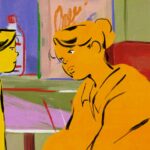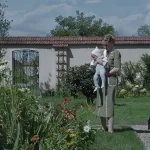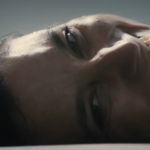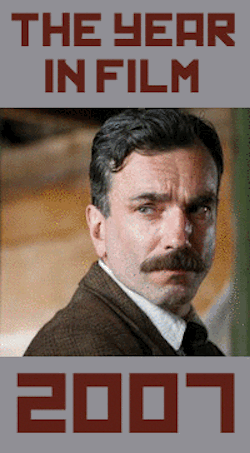La Flor: Unstill Life, by David Bax
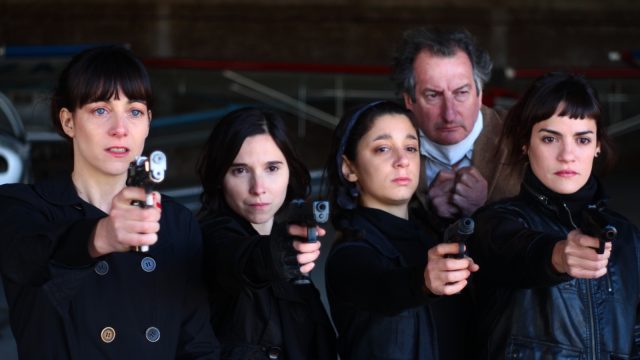
In his onscreen introduction to his thirteen and a half hour (fifteen hours with intermissions), multi-part undertaking La Flor, Argentinean director Mariano Llinás describes the first episode of the film as a B-movie, “the kind Americans used to make with their eyes closed and now can’t make anymore.” It’s a funny dig at an Disneyfied Hollywood increasingly devoid of personality but it also may come as a bit of a surprise, this fierce advocacy for good, cheap genre filmmaking at the outset of what certainly seems like a dedicatedly avant garde, highbrow venture. Any such assumptions will soon be upended, though, as three of La Flor‘s six episodes (comprising more than two thirds of the film’s total runtime) are made up of a horror story, a semi-musical (with outstanding songs and a subplot about a cabal of wealthy elites who collect the venom of rare scorpions and inject it into their bloodstreams) and the centerpiece, a nearly six-hour long Cold War spy thriller. La Flor may not get much play outside of arthouses, unfortunately, but its roots lie in the irresistibly trashy, universally embraced tropes and brash orchestral stings of the grindhouse, the VHS rack, the late night cable station.
La Flor (the flower) gets its name from the diagram Llinás draws to explain its structure. The first four episodes have no endings; these are the petals. The fifth episode is a short film with a beginning, middle and end; this is the ovary. The final film, the stem, consists of an ending only. With the exception of episode five, all of these stories feature the same four actresses, Elisa Carricajo, Valeria Correa, Pilar Gamboa and Laura Paredes.
If you fear that so many incomplete narratives will frustrate you, you’re adhering to the exact dicta Llinás hopes to challenge. Not that La Flor is a manifesto or even a statement; the whole thing plays more as an experiment, as if the director and his cast and crew decided to spend ten years of their lives just trying something to see if it would work. Yet that sense of looseness, of improvisation, is belied by Llinás’ surehanded grace and undeniable passion. He may be removing pieces of narrative from the context of a whole story but he’s not interesting in overturning narrative as a powerful and well-loved cinematic device. Nor, for the record, is he deconstructing the genres in which he traffics. Rather, he revels in their trappings; he loves them for the same reasons we do. It’s no simple thing to pry narrative conventions away from our expectations of resolution, of the story being concluded. But La Flor does so most successfully in the spy episode, a tale of almost continuously rising action in which a team of special agents (the four leads) are double crossed by their own commander in the midst of a kidnapping; suddenly the professor they were meant to deliver is the only collateral they have in their risky ploy to escape with their lives. Espionage stories always offer layers upon layers but Llinás digs even deeper. There are the four main spies, the four dispatched to kill them, their two-faced superior and the professor. And almost all of them get their own flashbacks, some of them complex enough to support feature films of their own, that lay out how they arrived at where the primary story finds them. In short, Llinás offers us the suggestion of a story that could continue forever in any direction. Who needs or even wants an ending when the telling itself is so rewarding?
Maybe the only risk of a film going on too long is that it could eventually become self-aware. But that’s not necessarily a bad thing, as La Flor demonstrates in episode four, a metaphysical mystery about a film director who disappears while making a years-long, multi-episode film with the same four lead actresses. Even before that, hints of meta-commentary pop up. The second episode–about a famous singer-songwriter (Gamboa) who has divorced her longtime creative partner but is still recording with him–has a few such moments. In a heartbreaking monologue, a younger singer (Correa), realizing her boyfriend is going back to his ex, admits to herself that, were she living in a story, she wouldn’t be the lead or even the antagonist but merely a plot device. We, of course, know that she is living in a story and that a plot device is exactly what she is, which makes us feel for her all the more. As La Flor goes on, our attachment to these actresses only deepens, growing beyond any one of their characters. They become movie stars within the course of a single movie. We miss them when they’re absent in episode five, just like we miss Gamboa’s vocals in episode two when we hear the backing track of her latest single before she’s filled in the lyrics. Llinás plays with this familiarity, too, encouraging us to examine how our awareness of actors influences our engagement with their films. In a scene in episode three, when it’s clear someone’s about to be killed, we almost subconsciously know (or hope we know) that it’s going to be the character that isn’t played by one of our core four.
Meanwhile, setting the first two episodes in the present day makes episodes three and six, the two period pieces, seem more artificial because we’re more aware of the element of playing dress-up. Llinás encourages this interpretation; despite episode three’s 1980s setting, he makes little effort to hide that it was shot in the 21st century, at one point conspicuously framing a website address advertised on the side of a ferry.
For all of its mass and startling bluntness, La Flor is also replete with elegiac imagery. Reflecting the stories all stacked atop one another, Llinás often traffics in superimposition. More often than not, this will include onscreen text, sometimes diegetic (a ghostly dossier beneath the expositional scene illustrating its contents) and sometimes just titles locating us in the story. In other cases, though, the technique is more oblique. Late in episode three, when the flashback of one spy (Carricajo) has her spending years riding the never-ending Russian railways, looking for a mole, it unfolds in overlapping montage, mirroring an earlier sequence consisting of paintings by Edouard Manet.
Not being well-versed in Manet, I can’t make an educated guess at the connection. But I know that Manet painted people and Llinás seems largely uninterested in a depopulated cinema. Even during the airshow sequence in episode five, in which we watch planes dance and maneuver through the air, we are so accustomed to Llinás devotion to character that we can’t help but think about the pilots, invisible to our eye though they may be. Of all the people in La Flor, however, Carricajo, Correa, Gamboa and Paredes are the most important. In some ways, the whole film is about spending time with them. Llinás’ affection for them seems to deepen just as our own does, even if episode four reminds us (somewhat tongue-in-cheek) that familiarity does breed contempt. By the time the thirteen and a half hours are up, Llinás has gone to the ends of esoteric inaccessibility only to remind us of what makes cinema so indelibly popular: Beautiful images of beautiful people just doing things.


